Kailynn Johnson talks about her cover story on the Memphis Roller Derby and the latest on the xAI controversy. Plus, a new documentary on John Lennon and Yoko Ono and why haven’t you seen Sinners yet?
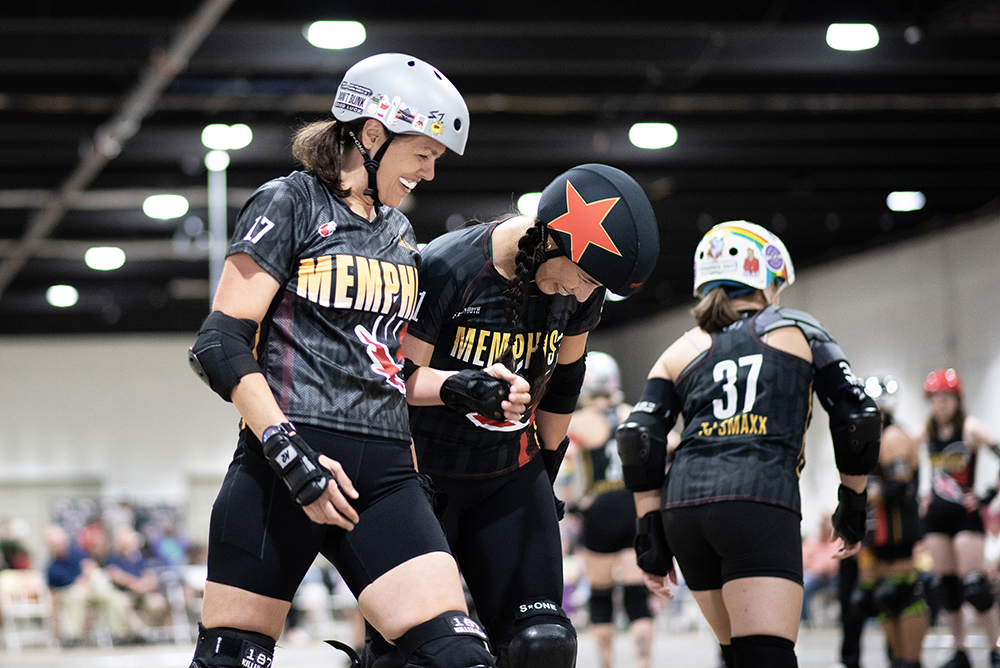

Kailynn Johnson talks about her cover story on the Memphis Roller Derby and the latest on the xAI controversy. Plus, a new documentary on John Lennon and Yoko Ono and why haven’t you seen Sinners yet?
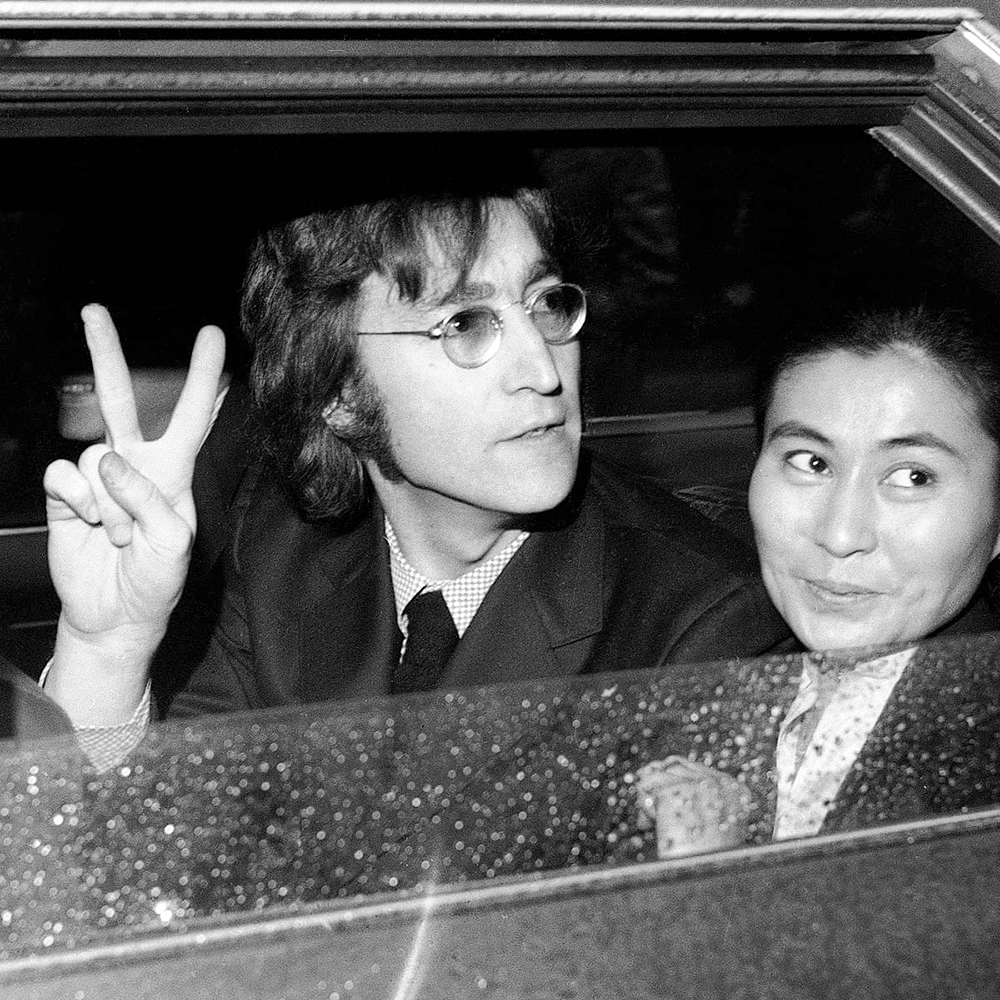
When John Lennon was shot in front of his apartment at New York City’s Dakota building in 1980, Time magazine called it an “assassination.” Noting that the term is usually reserved for the murder of a head of state, the Time editorial board called Lennon “the leader of a state of mind.” Before his murder by a deranged fan, Lennon was a musician — albeit one of the most famous in modern history. Afterwards, he became a martyr.
But martyrdom, it turns out, does not suit Lennon. Sure, they open every Summer Olympics with his secular hymn “Imagine,” but the Beatles Backlash is real, and Lennon’s legacy has gotten the worst of it. Sir Paul McCartney is still playing shows and wowing audiences at age 82. Ringo is still the floppy mascot guy he always has been (and, let’s be clear, one of the greatest drummers of all time). George Harrison’s solo work is now venerated as the best of the post-Beatles output. But spend a few minutes on any social media network these days and you can find people who say the Beatles were massively overrated, and, most cruelly of all, John Lennon would probably be MAGA if he were alive today.
Lennon the iconoclast would have understood. A couple of generations have had the Fab Four’s music shoved down their throats by the Beatles industrial complex. That the band “changed the world” is a Boomer catechism. So when young people hear the music made by a bunch of moldy old white guys, of course they’re predisposed to hate it.
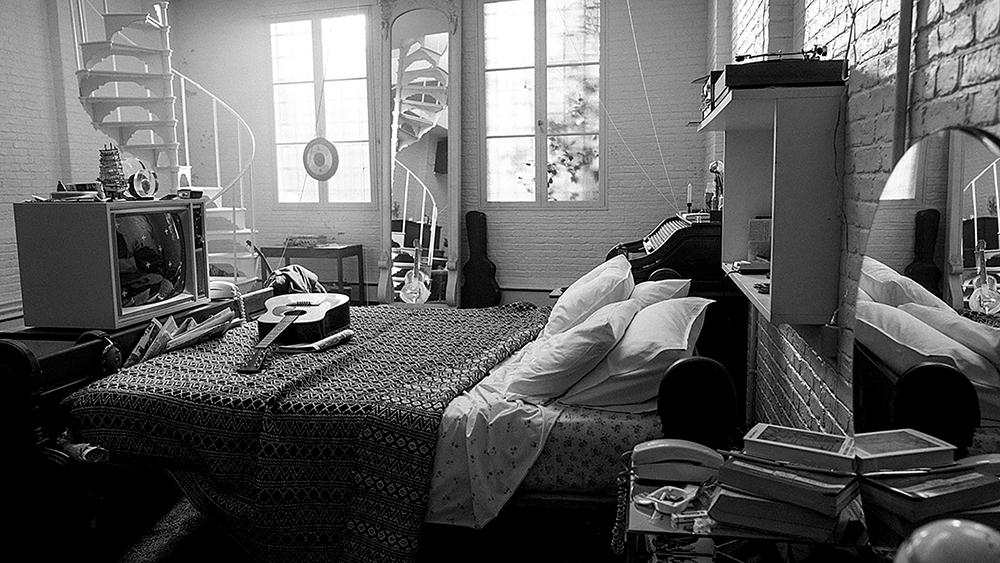
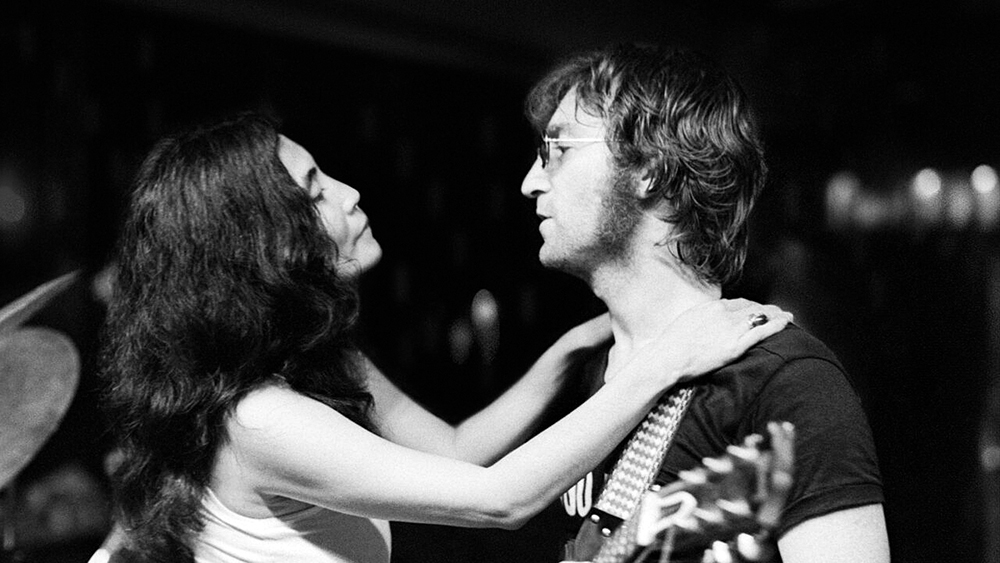
In One to One: John & Yoko, director Kevin Macdonald aims to demystify Lennon and reveal the human being behind the mythical martyr. The meat of the film is performance footage from Lennon’s Madison Square Garden show on August 30, 1972. The concert was a benefit for the victims of the Willowbrook State School in New Jersey, which journalist Geraldo Rivera had exposed as a hellhole where developmentally disabled children were basically imprisoned and left to rot. It was the only full-length concert Lennon played after the Beatles’ Shea Stadium swan song in 1966.
The shocking footage from inside Willowbrook is a part of the hundreds of clips from TV and film that flesh out One to One. Macdonald begins the story in 1971. The Beatles have been broken up for more than a year, and John Lennon has been living with his new wife Yoko Ono in a posh English country estate outside London. As Lennon recounts in a taped interview with a print journalist, Ono was the one who hated living in a mansion and wanted to simplify their lives. On a short vacation to New York City, Lennon and Ono discovered that they loved the hustle and bustle, and the cultural scene. Lennon tells the interviewer that he felt at home because “no one bothered us.” So the couple sold their English estate and moved into a two-room flat in Greenwich Village. There, they mostly smoked weed and watched the TV they had propped up at the foot of their bed, which had been left by the apartment’s previous owner.
A couple’s therapist would have a field day with the picture of John and Yoko’s relationship Macdonald draws. The “Yoko is the villain who broke up the Beatles” narrative was exposed as misogynistic agitprop by Peter Jackson’s epic Get Back documentary series. Jackson found a sound clip where Sir Paul himself calls bullshit on the notion that the group was in trouble because “Yoko sat on an amp.” But Lennon and Ono were clearly codependent, years before the psychological term was coined. By the time they moved to New York, they had both gotten hooked on heroin and kicked the habit. Lennon was tired of being a prisoner of his own fame and fascinated by the avant-garde art world which had embraced Ono, whom he called a “creative genius.” (One of the film’s running gags involves taped conversations between Ono’s staff who are trying desperately to secure a thousand house flies for one of Ono’s art installations.) In a clip from one of the panel-type talk shows that was popular on TV at the time, Lennon opens up about being abandoned by his mother and reconnecting at age 16, only months before she was hit by a truck. For her part, Ono was the daughter of a rich Japanese family who had been made into destitute refugees by the American firebombing of Tokyo. It’s no wonder that two people with abandonment issues would cling so fiercely to each other.
The focus of their lives in 1971 to ’73 was radical leftist politics. Ono’s feminism was a revelation to Lennon, who had been abusive to his first wife Cynthia. Macdonald drives the point home by showing footage of Lennon getting kicked out of the First International Feminist Conference, where Ono was speaking, for being the only man there. Protests against the Vietnam War were raging in America, and the Ono-Lennons were in the thick of it. They were planning an American “peace tour,” where some of the proceeds would have gone to bail funds for imprisoned Black men. Lennon tried to recruit Bob Dylan as a co-headliner but never quite got it done. He wrote a song about the Attica prison revolt that his manager begged him not to perform in public. In the end, the tour plans fell apart. Three months after the Plastic Ono Band’s MSG show, Nixon was reelected in a landslide, and his State Department tried to deport Lennon. The restored concert footage shows what might have been. Lennon and the band (which includes a bass player dressed as Jesus and a Stevie Wonder guest vocal on “Give Peace a Chance”) are loose and playful. Lennon delivers a transcendent version of “Imagine” at a piano while casually chewing gum. One imagines a world where, with a little more practice, they coalesced into a touring powerhouse that freed prisoners across the country. But that is not the world we got.
One to One: John and Yoko
Now playing
Malco Ridgeway

I was 15 the first time I played with a real rock-and-roll band. The first song we learned was “Get Back” from The Beatles’ final released album Let It Be. We started with that one because it was easy — or at least it sounded easy. That’s when I learned that great rock music is deceptively simple. It wasn’t hard to hit the notes. What was hard was hitting them at exactly the right time, with exactly the right feel. We must have jammed on “Get Back” for an hour trying to get it to sound right, which of course we never did.
I went on to play in rock bands for 30 years. In college, I played a lot of gigs and made a lot of money. After college, I played cooler shows, made good records, and didn’t make much money. I’m still doing it — my last album was released in 2020, got good reviews, and even turned a modest profit.
Maybe that’s why, in the new Beatles documentary Get Back, when we see Paul McCartney, frustrated because his bandmate John Lennon is late for rehearsal, plop down on a chair in the corner of a soundstage and pound out “Get Back” off the top of his head, it’s kind of like watching a tape of yourself being conceived: profound, moving, and also a little icky. Paul, it turns out, was just a band geek like the rest of us.
Let It Be was recorded in January 1969. Having spent 1966-1968 revolutionizing studio recording, the plan was to get back to their bar band roots by writing a new album’s worth of songs and premiering them with their first live concert in three years. Crucially, they were going to do it all in front of director Michael Lindsay-Hogg’s cameras, in a soundstage at Twickenham Studios, where A Hard Day’s Night and Help! had been filmed. That meant they had essentially three weeks to write 14 songs, whip them into shape, and record them in front of an audience. This was difficult, but not out of the question for the band who had changed pop music in one day with the 10-song session that produced Please Please Me. Legend has it that the sessions ended in acrimony, with George Harrison briefly quitting, and the band trying to salvage the project with an impromptu live show on the roof of their Apple records studio. The album was shelved, and the band returned to the studio for Abbey Road. After they broke up in early 1970, Let It Be was finally released, and Lindsay-Hogg’s feature documentary became notorious for capturing the “breakup of The Beatles.”
A few years ago, Lord of the Rings director Peter Jackson acquired the rights to the Let It Be sessions footage, which encompassed more than 60 hours of film and more than 180 hours of audio. He spent four years editing the chaotic mess down to a “crucial” 468 minutes.
If your first reaction is, maybe he could have gotten a little more crucial than eight hours, you’re right. This is not a film with a punchy narrative; in part three, Lindsay-Hogg complains that he has lots of footage, but no story. This is the ultimate hangout picture, because you get to hang out with The Beatles. That’s what’s so compelling — you’re watching some of the greatest artists of the last century at work.
For a seasoned show dog, it’s fascinating to watch the greatest of all time systematically violate the rock band rules. First, the rehearsal space is sacred. Don’t record the writing process, or the frank discussions that take place there. Second, no significant others in the studio. This is known as the “Yoko Rule,” which Get Back shows is unfair. Yoko Ono is omnipresent and clingy, sitting next to John in the early going, before getting bored and leaving as the sessions drag on. She’s a non-factor in the lads’ conflict, which largely stems from trying to do the delicate mental work of composing songs while under the camera’s gaze.
The Beatle who is up to the challenge of working in the spotlight is Paul. In one stunning moment, while John is meeting with Lindsay-Hogg to plan the ill-fated concert, Paul is in the background, noodling around on the piano, and “Let It Be” emerges. When he takes it to the group, and The Beatles’ eyes light up, it’s like watching Leonardo da Vinci sketching The Last Supper. Get Back shows that The Beatles, often reduced to cartoon characters, were human after all — and that makes their art even more extraordinary.
The Beatles: Get Back is now streaming on Disney+.
Here’s my big takeaway from Eight Days A Week: The Beatles were a great band.

The Beatles play Washington D.C during their 1964 tour of America in Eight Days A Week.
I mean, yeah, big whoop, right? The Beatles were a great band. Stop the presses. But I think The Beatles have been swallowed by their own legend. In the hip hop era, extolling the virtues of The Beatles will get the kids’ eyes rolling. They are the quintessential Baby Boomer phenomenon, and this documentary is directed by another Baby Boomer phenomenon: Ron Howard, a guy whose showbiz career started in 1959. Lately, the Apollo 13 director has devoted his time to low-impact adaptations of DaVinci Code books, and this movie is another softball. Nobody ever went broke selling The Beatles to Baby Boomers.
There are some parts of this production that seem phoned-in. The sound design, which you would expect to be perfect in a project like this, is occasionally haphazard. It’s not exactly briskly paced. There are a few colorized segments that look head-scratchingly tacky. As an obsessive fan of the band and of music in general, I didn’t really learn anything significant about The Beatles from this film.
But wow, they were a great band. And they’re still great. A couple of years ago, my wife and I paid a bunch of money to see Paul McCartney at the FedEx Forum. Our expectations were tempered by the fact that Sir Paul was 70 years old, but we figured if we just got to watch Paul Freakin’ McCartney’s muscle memory fire for an hour or so, it would be worth it. The man is living history. But the show wasn’t like that at all. Paul killed it. He played for more than two hours, alternating between bass, guitar, piano, and ukulele, never leaving the stage. The only clue that he exerted himself at all was that he took his jacket off after a few tunes. If nothing else, the man is a good argument for vegetarianism.
Before the show, we were talking about how it would be preferable to see Sir Paul in a small room instead of the Forum. But during the show, he casually dropped an anecdote about his last tour where he played to a crowd of 300,000 in Ukraine, and we realized that for him, the Forum was a small room.

The Beatles at Shea Stadium, 1966
Eight Days A Week makes it clear that Paul and the lads pretty much invented the modern arena concert—or rather, it was invented because of them. Thanks to a ten-camera film setup, the first mega-show The Beatles played, Shea Stadium in New York, provides the documentary’s most compelling footage. They perform out on the baseball diamond, with the stage about where second base would be. The isolation from the 50,000-strong throng of their rabid fans provides a prefab visual metaphor for what it was like to be one of the Fab Four in 1965. There is no huge sound system visible, like there would be at a modern arena concert, because they simply hadn’t been invented yet. A good system for getting amplified music out to a crowd that big wouldn’t be assembled for years, when The Grateful Dead’s sound crew finally cracked the problem. At Shea, The Beatles played through the stadium’s built-in PA, a primitive system only designed for at-bat announcements and the organ player. Even more unfathomable from a modern musician’s perspective, they played without monitors. They couldn’t hear themselves. And yet, they played in tune, in rhythm, and sang harmonies more complex than just about anything you hear on the radio today. The show, which is appended in full to the version of Eight Days A Week now showing at Studio on the Square, is a dazzling display of virtuosity and stage smarts under difficult conditions that had no real precedent.
Like I said, The Beatles were a great band—not just a collection of genius songwriters and visionary artists, a great band. When Howard trots out 1963 footage of John leading the band through an Earth-shaking rendition of “Twist and Shout”, I thought, the young Beatles would kill at Gonerfest, the annual garage punk festival occurring in Memphis next weekend. Eight Days A Week confirms that every young group of miscreants who have picked up guitars and drums in the last fifty years have been playing in The Beatles sandbox.
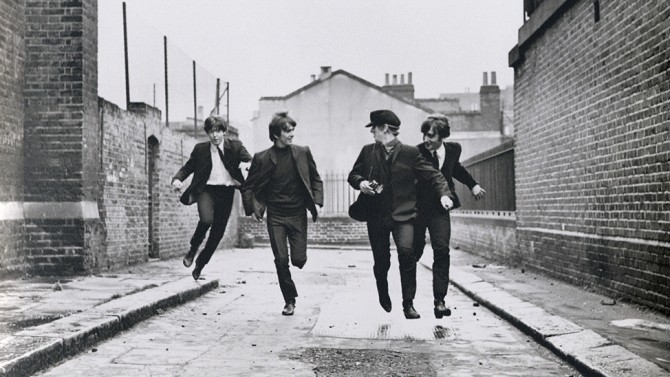
Richard Lester’s noisy, jumpy, compulsively ironic A Hard Day’s Night has played an important part in the Fab Four’s creation myth since its London premiere on July 6, 1964. Like the Beatles themselves, the film is strangely resistant to negative criticism. It has never really gone out of fashion, which is partly why Indie Memphis is screening a great-looking 50th anniversary restoration on Wednesday, July 9th, at Studio on the Square.
This meticulously scripted yet seemingly improvised piece of fanboy and fangirl propaganda seduced critics immediately. The Village Voice‘s Andrew Sarris proclaimed that “A Hard Day’s Night has turned out to be the Citizen Kane of jukebox musicals, the brilliant crystallization of such diverse cultural particles as the pop movie, rock n’ roll, cinéma vérité, the nouvelle vague, free cinema, the affectedly hand-held camera, frenzied cutting, the cult of the sexless subadolescent, the semidocumentary, and studied spontaneity.”
In enthusiastic prose that suggests Sarris was momentarily infected by the same hysteria propelling Night‘s hordes of screaming teenage girls, Sarris also wrote, “My critical theories and preconceptions are all shook up, and I am profoundly grateful to the Beatles for such a pleasurable softening of hardening aesthetic arteries.”
Nearly 40 years later, Roger Ebert’s “Great Movies” essay echoed Sarris’ sentiments while highlighting the film’s continuing influence on pop-culture consumption. “Today,” he wrote, “when we watch TV and see quick cutting, hand-held cameras, interviews conducted on the run with moving targets, quickly intercut snatches of dialogue, music under documentary action and all the other trademarks of the modern style, we are looking at the children of A Hard Day’s Night.” Although countless reality shows and endless infotainment programming have rendered the expressive possibilities of Lester’s sound-image syntheses commonplace clichés, it’s hard to argue with Ebert’s assessment.
Along with Rob Reiner’s This is Spinal Tap, A Hard Day’s Night is the definitive movie about being in a rock-and-roll band — which doesn’t necessarily make it truthful or authentic. In a new essay for the Criterion Collection’s DVD release, Howard Hampton praises the film as a truthful-looking act of calculated image manipulation: “Collective and individual identities — the John-Paul-George-Ringo lunch box and merchandise concession — are worked out and woven through a treadmill environment where the hamsters play satiric havoc with the business of light entertainment and teen merchandising.” However, no amount of cynicism or satire can deflate the first “Can’t Buy Me Love” interlude, where the Beatles jump, scuffle, dance, and collide with each other in an open field like overheated molecules.
Disharmonious voices about the film were seldom heard. They did exist, though; in his 1966 essay “Day of The Lesteroids,” Manny Farber wrote “Lester’s trademark is a kind of thickness of texture which he gets purely with technique, like the blurred, flattened, anonymous, engineering sounds which replace actors’ voices, plus the piling up of finicky details, as in the scene of the Beatle shaving his friend’s image in the mirror.” And remember the guy who once sang “I don’t believe in Beatles,” too. But I don’t want them to spoil the party.
A Hard Day’s Night screens at Malco’s Studio on the Square Wednesday, July 9th, at 7 p.m. and 9 p.m. Tickets are $8.
David Leaf and John Scheinfeld’s inept, tiresome new film The U.S. vs. John Lennon depicts John Lennon and Yoko Ono’s 1971 move to New York City and their subsequent involvement in the anti-Vietnam War movement. The couple’s status and media importance also led them into relationships with activists such as Jerry Rubin, Abbie Hoffman, and Bobby Seale of the Black Panther Party. These uneasy alliances between rock stars and rabble-rousers alarmed then-President Richard Nixon and FBI director J. Edgar Hoover, who placed Lennon under FBI surveillance. The government also tried to deport Lennon and Ono in 1972, the year Nixon defeated George McGovern for the presidency.
Lennon’s anti-war demonstrations may merit a historical footnote in yet another book about the significance of the ’60s, but they are wrongly recast as mythic countercultural stands by a parade of talking heads, including McGovern, Gore Vidal, Yoko Ono, and Geraldo Rivera. None of these pundits offers any insights. The only useful head is journalist Robin Blackburn, who correctly points out that Lennon’s vague utopian stance was powerful principally because he was an artist and a good interview subject whose “protests” were funny and strange but not terribly cogent — more conceptual art than political program.
Ironically, Lennon’s best music from this time tells a different story. The hoary old hippie anthems “Imagine” and “Give Peace a Chance” are dusted off once more to establish Lennon as a legitimate revolutionary, but the other Lennon music in the film highlights his sarcasm and distrust of all authority. This is most clear when anti-war and draft-protest footage is scored to “Well, Well, Well” and “I Found Out,” two numbers from Lennon’s 1970 album Plastic Ono Band. These brutal songs condemn mass action in favor of a clear-eyed independence from all things communal and especially political. Yet here they are used, sincerely and mistakenly, as battle cries.
As history, the film is even worse, leaping from 1971 to 1966 to 1970 to 1969 to 1973 in a vain attempt to construct a chain of tangentially related historical events. Rather than illuminating events, such fumbling reinvents history as nostalgia; to claim that Lennon would have made an enormous difference in an election McGovern had already bungled beyond repair is useless ahistorical speculation.
In our current frightening political climate, where government surveillance may soon be a fact of life for everyone, self-congratulatory documentaries like The U.S. vs. John Lennon serve no clear or worthwhile purpose.
The U.S. vs. John Lennon
Opening Friday, October 13th
Studio on the Square